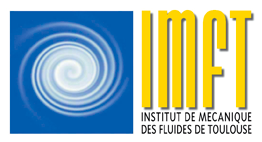Analysis of dual swirl H2/air flames under ambient and pressurized conditions.
Burners based on late hydrogen injection mitigate the risk of flashback and are considered as a promising technological solution for burning hydrogen in gas turbines. However, this approach introduces new complexities, particularly in flame stabilization and pollutant emissions with flames burning in multi-mode diffusion and partially premixed regimes. The case of hydrogen air flames stabilized on a dual swirl co-axial injector is considered in this work.
The work builds upon preceding analysis with the goal of experimentally deepening the analysis and understanding of the physical mechanisms at Reynolds numbers and thermodynamic conditions relevant to engine like conditions. A series of experiments is conducted in a transparent test rig at IMFT under atmospheric conditions, with air preheated to temperatures up to 773 K and injection velocities up to 150 m/s for air and 140 m/s for hydrogen. They are completed by experiments at engine relevant conditions in the MICADO test bench at ONERA.
Particle image velocimetry coupled to OH planar induced fluorescence measurements are used to unravel the structure of the flow and the flame in the different flow regimes by varying the injection conditions, injector and chamber geometry. Focus is put on determining the mechanisms controlling the interaction between the flow and the flame and the transitions between flame topologies. The influence of the central recirculation zone is also studied, revealing a new type of stabilization, designated as a ‘Tulip’ flame shape. The data provided in these experiments have been used in companion works to validate high fidelity numerical flow simulations and reduced order models.
Simultaneously, NOx and unburnt emissions are examined for each flame topology. The results indicate limited nitrogen oxide emissions across a broad operating range. However, unburnt hydrogen is detected at very lean conditions. These emissions are found to be associated with partial flame front fragmentation caused by high strain rates. The range of conditions achieving 100% combustion efficiency expands however significantly as the air preheat temperature rises.
Lastly, tests conducted under pressurized conditions, up to 13 bar, are presented to assess the injector performance under thermodynamic conditions typical of aeronautical engines. Flame images and sensor data are analyzed and compared with observations at atmospheric conditions to determine whether the identified physical mechanisms identified at 1 bar remain consistent at high pressure and high temperature
- Christine ROUSSELLE Pr., Université d’Orléans Président du Jury
- Deanna LACOSTE Assoc. Pr., KAUST Rapporteur
- Bruno RENOU Pr., INSA Rouen Rapporteur
- Guillaume PILLA Dr., ONERA Palaiseau Examinateur
- Thierry SCHULLER Pr., Universit´e Toulouse III, IUF Directeur de thèse
- Laurent SELLE Dir. Rech., CNRS Directeur de thèse
- Nicholas C. W. TRELEAVEN Dr. SAFRAN TECH Invit
